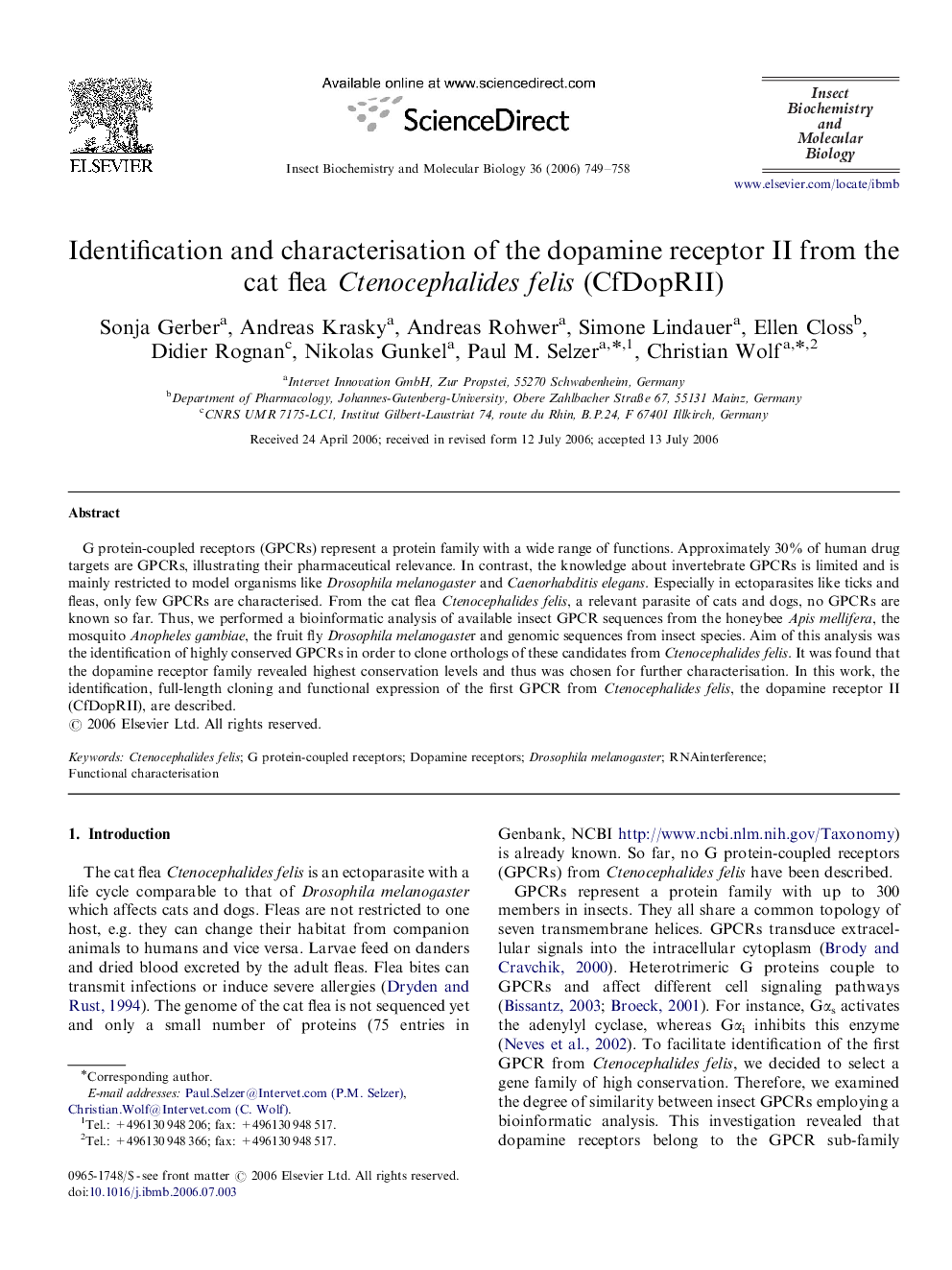| Article ID | Journal | Published Year | Pages | File Type |
|---|---|---|---|---|
| 1983162 | Insect Biochemistry and Molecular Biology | 2006 | 10 Pages |
Abstract
G protein-coupled receptors (GPCRs) represent a protein family with a wide range of functions. Approximately 30% of human drug targets are GPCRs, illustrating their pharmaceutical relevance. In contrast, the knowledge about invertebrate GPCRs is limited and is mainly restricted to model organisms like Drosophila melanogaster and Caenorhabditis elegans. Especially in ectoparasites like ticks and fleas, only few GPCRs are characterised. From the cat flea Ctenocephalides felis, a relevant parasite of cats and dogs, no GPCRs are known so far. Thus, we performed a bioinformatic analysis of available insect GPCR sequences from the honeybee Apis mellifera, the mosquito Anopheles gambiae, the fruit fly Drosophila melanogaster and genomic sequences from insect species. Aim of this analysis was the identification of highly conserved GPCRs in order to clone orthologs of these candidates from Ctenocephalides felis. It was found that the dopamine receptor family revealed highest conservation levels and thus was chosen for further characterisation. In this work, the identification, full-length cloning and functional expression of the first GPCR from Ctenocephalides felis, the dopamine receptor II (CfDopRII), are described.
Keywords
Related Topics
Life Sciences
Agricultural and Biological Sciences
Insect Science
Authors
Sonja Gerber, Andreas Krasky, Andreas Rohwer, Simone Lindauer, Ellen Closs, Didier Rognan, Nikolas Gunkel, Paul M. Selzer, Christian Wolf,
